enSEMble – June 2023 Issue
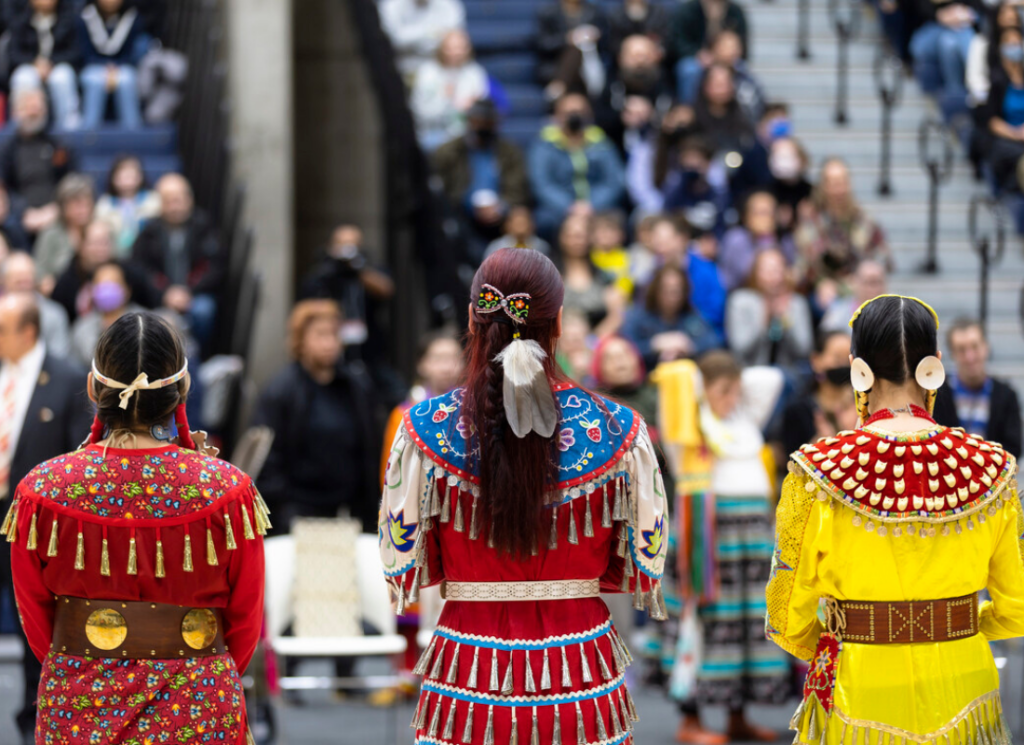
U of T Recognizes Indigenous Peoples Month and National Indigenous Peoples Day 2023
On June 1, the University of Toronto celebrated the beginning of National Indigenous History Month. On June 21, we also celebrated National Indigenous Peoples Day, which coincided with the summer solstice and affirmed the traditional importance of this time for many Indigenous peoples and communities. You can read U of T’s official Indigenous History Month and National Indigenous Peoples Day 2023 statement.
The considerable advocacy work by representatives of First Nations, Inuit, and Métis communities led to the creation of National Indigenous History Month in 2009 and National Indigenous Peoples Day (formerly National Aboriginal Day) in 1996. Both honour the distinct cultures of First Nations, Inuit, and Métis communities and encourage widespread recognition of the accomplishments and resilience of Indigenous peoples across Turtle Island.
U of T featured a host of Indigenous History Month programming, providing opportunities for U of T community members to learn about Indigenous histories, cultures, and protocols. The Office of Indigenous Initiatives supports this ongoing learning journey by offering trainings for students, staff, librarians, and faculty members.
U of T Recognizes Pride 2023
On June 1, the start of Pride Month was celebrated by flag raising ceremonies at U of T St. George, UTM (University of Toronto Mississauga), and U of T Scarborough. June provides an opportunity to bring the wider U of T community together to celebrate 2SLGBTQ+ communities at U of T and globally; to reflect on defining moments in the fight for 2SLGBTQ+ rights; and to renew a personal and collective commitment to address discrimination against 2SLGBTQ+ individuals. You can read U of T’s official Pride 2023 statement.
Pride is also an opportunity to reflect on and commemorate the progress made by 2SLGBTQ+ activists since the Stonewall Riots in the summer of 1969. This confrontation evolved in response to a police raid of the Stonewall Inn, one of New York City’s most popular gay bars at the time.
In addition to the flag raising ceremonies, there were a host of events across campus including the annual U of T Pride Pub, a Pride-themed Beading Circle at the UTM Indigenous Centre, and the 2023 Pride and Remembrance Run fundraiser for organizations serving Toronto’s 2SLGBTQ+ community. The City of Toronto also held its annual pride parade event on June 25th.

U of T Soldiers’ Tower Canada Day Carillion Recital
Have you ever heard the Soldiers’ Tower Carillion on campus? A carillon is a musical instrument consisting of a set of bells cast in bronze and tuned so that they can be sounded together harmoniously by a player on a keyboard. If you would like to take in a free performance commemorating Canada Day, there’s an upcoming opportunity to listen to the 51 bells of the historic Soldiers’ Tower WWI memorial.
Date: Saturday, July 1, 2023
Time: 2pm – 3pm
Location: Beside Hart House, 7 Hart House Circle, M5S 3H3
This is a free outdoor recital and seating will be provided. See the full recital schedule.
Trails to Explore this Summer
Are you looking to make the most of your time outdoors this summer? Interested in exploring some trails in Toronto and the GTA (Greater Toronto Area)? Take a look at these hidden gems and you might just find a new favourite trail.
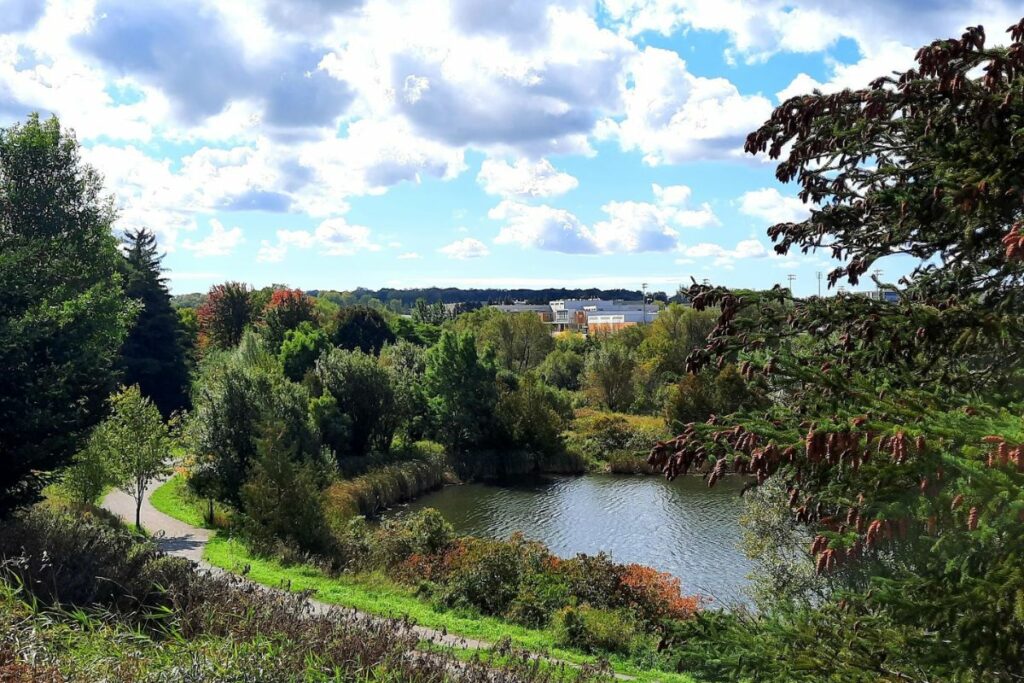
Image credit: Trails to Explore
Aurora Community Arboretum
If you are looking for new trails to explore this summer, consider a trip to the Aurora Community Arboretum Inc. (ACA or the Aurora Arboretum). The ACA is a volunteer-driven non-profit organization dedicated to the creation and maintenance of a 100+ acre arboretum for residents of Aurora and surrounding areas to enjoy. This natural treasure is a living tree museum where many species and varieties of trees are showcased.
Established in 1996, the ACA went from a small tree-planting project to a larger conservation initiative in collaboration with the Town of Aurora. Today, this ambitious undertaking has created an urban oasis encompassing the whole East Holland River valley from Wellington Street to St. John’s Sideroad. If you want to bring your furry companion along, the ACA also includes an off-leash dog park.
The ACA encompasses a section dedicated to formal sports facilities, an area reserved for semi-formal tree planting, and the remainder is devoted to naturalized forest, meadow and wetland zones. From birdwatching to bicycle trails, the ACA boasts a range of activities for making the most of your outdoor time this summer. Thanks to Jason Ewer, Systems Analyst & C.R.M. Co-ordinator for this suggestion.
Fun Fact: The Aurora Arboretum serves the 55,000+ residents of Aurora and is a draw to the surrounding areas.
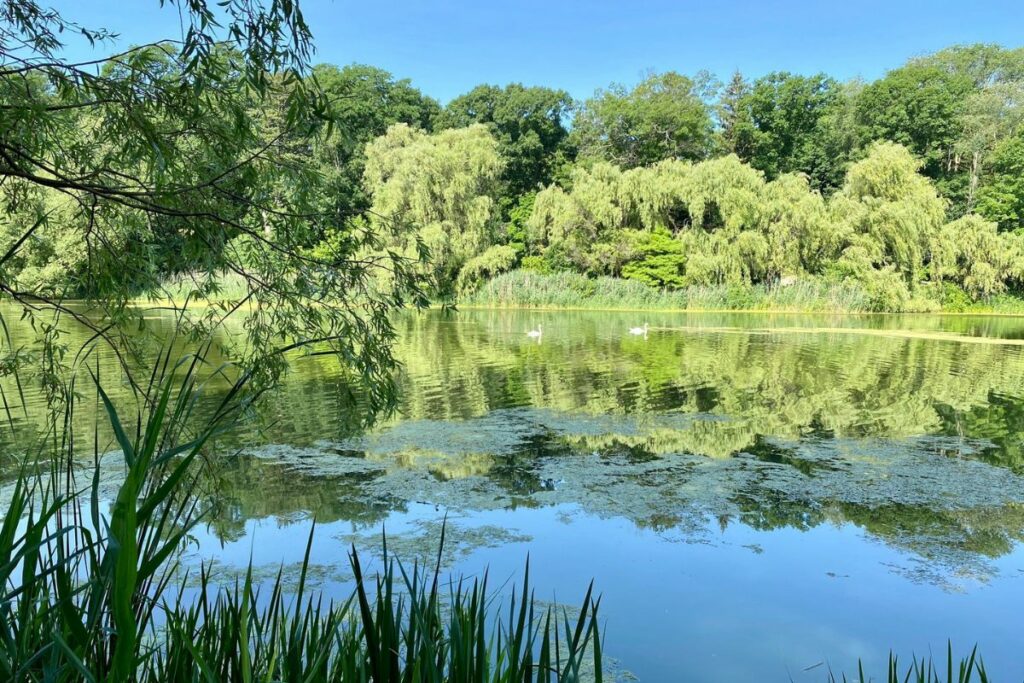
Image credit: Trails to Explore
High Park
High Park can be considered the smaller Toronto equivalent of New York’s Central Park. With its highly accessible location and some of the most beautiful green spaces and hiking trails in the city, High Park is a great place to spend a summer day.
While you might have visited High Park in the past to see the gorgeous cherry blossoms, relax by Grenadier Pond, or take in the Japanese garden, another visit to explore the trail loop is worthwhile. The High Park Area Trail is a loop trail around the perimeter of the park, spanning about 5km. Following the High Park Area Trail will allow you to see hardwood forests, wildflowers, and many different species of birds. A jewel in the city’s park system, residents and visitors can enjoy its many trails, wildlife, attractions, playgrounds, and natural features year-round.
Fun Fact: Approximately two-thirds of High Park remains in a natural state, with robust environmental management efforts ensuring its preservation.
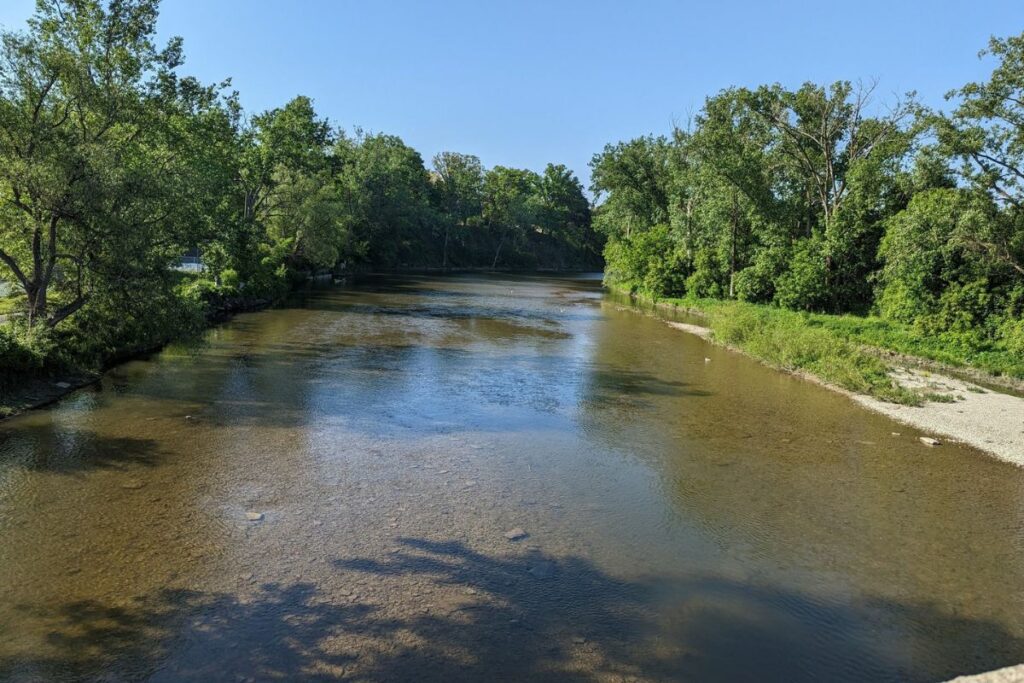
Image credit: Trails to Explore
Humber River Recreation Trail
An excellent option for biking or hiking, the 8 km Humber River Recreation Trail offers scenic paths that run from north to south on the banks of the Humber River, a tributary of Lake Ontario (east to west, if on the West Humber Trail). Some of Toronto’s best paved family-friendly, multi-use trails can be found here, and it features scenic views of the city and quant neighbourhoods along the Humber River.
This route eventually connects to the waterfront trail, another popular and picturesque path. There are several bridges, watery vistas, and footpaths along the Humber River Recreational Trail, creating several scenic lookout points all the way from Steeles south to the Martin Goodman Trail.
Fun Fact: The Humber River Recreation Trail follows a centuries-old Indigenous path that was most recently used by the Wendat, Onondawahgah, and later, the Mississauga First Nations to travel between Lake Ontario and Lake Simcoe.
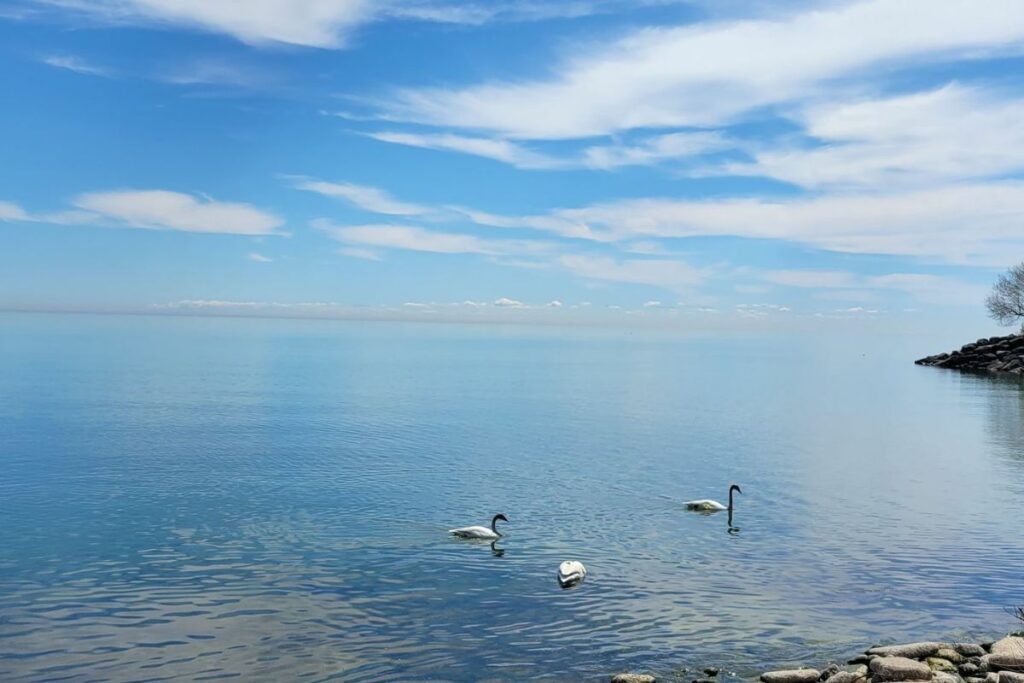
Image credit: Trails to Explore
Scarborough Bluffs
The Scarborough Bluffs boast hulking, steadily eroding cliffs reminiscent of coastal England, and turquoise water that might fool you into thinking you are in the Caribbean. The bluffs rise to a height of 90 metres above the coastline and stretch for 15 km along the Lake Ontario shore, from the Eastern Beaches of Toronto in the west, to East Point Park in the east.
This popular walking trail is around 6 km long at the base of the cliffs. The views from the top of the cliffs are best seen from Scarborough Crescent Park, or the Scarborough Bluffs Lookout, much safer options than scaling the cliffs themselves. The fine for climbing the cliffs is $5,000! Save yourself money and effort by observing them from Scarborough Crescent Park, or the Scarborough Bluffs Lookout, but be sure not to stand too close to the edge!
Fun Fact: The Bluffs are the former shoreline of an ancient glacial lake, marking the end of the Great Ice Age.
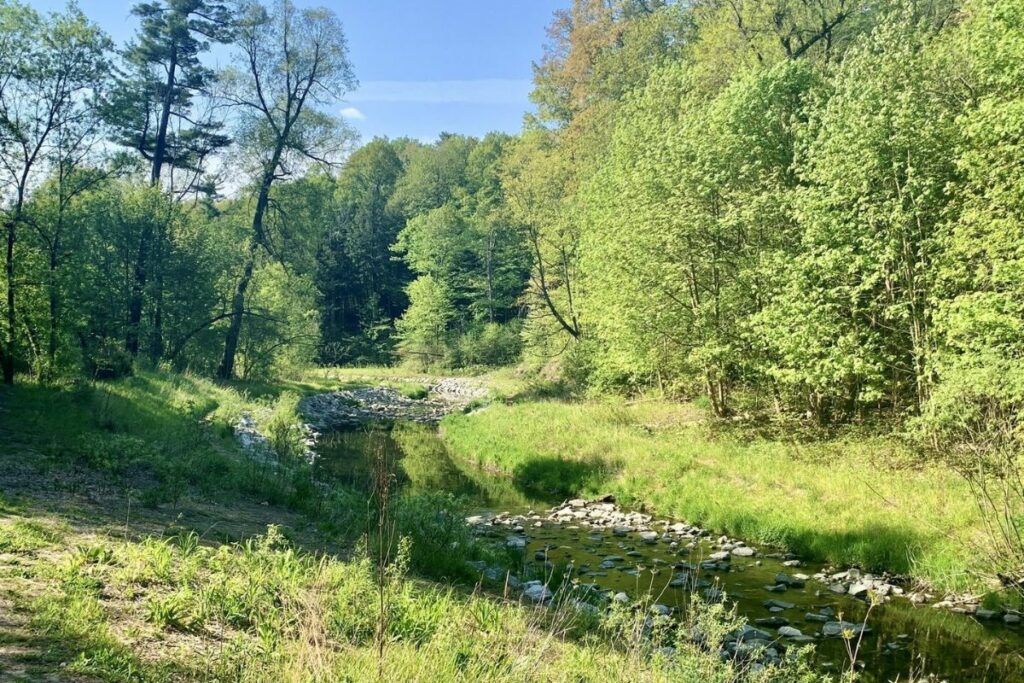
Image credit: Trails to Explore
Wilket Creek Park Trails
Close to Leslie and Eglinton, this 44-hectare park offers over 2 km of pedestrian/bicycle trails as well as plenty of undisturbed woodland perfect for summer nature walks. Wilket Creek Park is home to a variety of mature trees, and rare plant and bird species for naturalists and bird watchers to enjoy.
This trail can be accessed from the beautiful Toronto Botanical Gardens, so you can take some time to enjoy the gardens before heading out. As you make your way through the gardens, you can follow Wilket Creek to E.T. Steton Park Road. The trail exit is progressively downhill, with a scenic view of the creek. Following Wilket Creek also allows you to connect to the wider Don Valley Trail system.
Fun Fact: Alexander Milne, a Scottish weaver settled in Wilket Creek with his family following the war of 1812. From 1812 until the 1950s, Wilket Creek Park was known as Milne Park, named after the family.
